Eurofighter Jagdflugzeug GmbH, EUROJET Turbo GmbH and NETMA, the NATO Eurofighter & Tornado Management Agency, have signed contracts together worth €53.7 million to support the long-term development of the Eurofighter Typhoon combat aircraft.
The study contracts, which look at the Long Term Evolution (LTE) of the aircraft and the EJ200 engine, will span a total of 19 months for the aircraft and 9 months for the engine elements say the firms.
Herman Claesen, CEO of Eurofighter, said:
“These contracts represent a significant step in shaping the future of Eurofighter and will ensure it continues to be one of the most important assets in the future operating environment.”
NETMA General Manager, General Salvestroni, said:
“We are delighted to begin a new chapter in the development of the Eurofighter Typhoon. The LTE study contracts will set out a clear road map for the future of the platform that will make it relevant and resilient for decades to come.”
The high technology areas being explored include, according to a news release:
Mission System Architecture: The Eurofighter Typhoon already has one of the world’s most advanced Electronic Warfare systems. The LTE study will reinforce this by supporting the generation, transmission and utilisation of ever-increasing amounts of digital data both onboard (via advanced multi-spectral sensors) and offboard (via high performance tactical datalinks), whilst remaining resilient to new and emerging threats, including cyber. This will maintain Eurofighter’s ability to operate in the highly contested and congested future operating environment.
The Praetorian Defensive Aids Sub System (DASS): Looking at potential future DASS requirements out to 2050, enabling Typhoon to cope faster, easier and more affordably with new requirements to counter threats as they arise in the future.
The Human-Machine Interface: Refreshed cockpit displays and controls which will enable more demanding missions in the future, whilst ensuring full interoperability with cooperating assets in the air and over land and sea.
Operational Flexibility: Applying new adaptive power and cooling techniques and facilitating the agile integration of advanced weapons, thereby enabling more flexible store configurations to be flown.
Engine Performance: In terms of the EJ200 engine, the focus is on four key areas: thrust growth; range and persistence with increased parts life; survivability as well as control system enhancements.
Clemens Linden, CEO of EUROJET, said:
“Together with further life extension measures and the development of a future maintenance strategy based on in-service experience, the LTE contracts are the first step towards ensuring that Eurofighter’s combat strength can be maintained and fully exploited throughout the first half of the 21st century.”



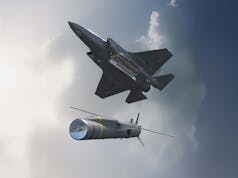

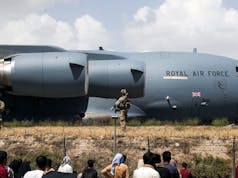
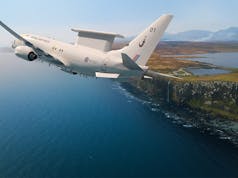
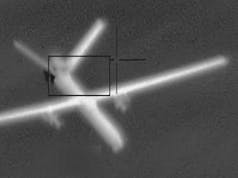
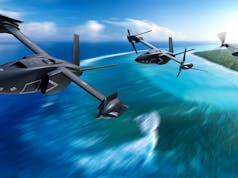
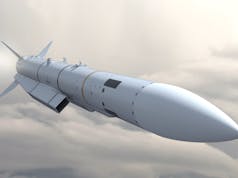
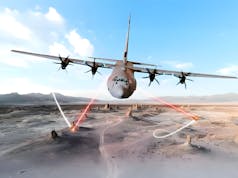


As a question to those with the knowledge, which is the better plane:
Typhoon
Rafale
The two aircraft are incredibly well matched with each having a slight advantage over the other in specific areas meaning that having both on the asset list as a single power would prove phenomenal, but will not happen.
In the end Typhoon has the ever so slight advantage with the superior EJ200 engine that the French refused to have. The EJ200 is cheaper to maintain, boasts superb reliability and still has additional power development to give which the French engine does not.
Many thanks
The Typhoon can also supercruise with a decent weapon load, whereas the Rafeal/Rafale/Rafeal cannot. The Rafale still has the edge as a ground attack aircraft, due to its larger inventory. But the Typhoon has the edge in air to air combat. This is because it has a better power to weight ratio, so bleeds off less speed when doing sustained turns. This area is vitally important for both beyond visual and within visual range engagements, when you just want to shoot and scoot.
Rafale can supercruise at mach 1.4, and engine thrust to weight ratio figures alone mean nothing, you also need to consider lift to drag as well as thrust to drag ratios. Rafale has less drag and doesn’t need as much thrust for the similar result.
The notion that the rafale is a bomb truck and that the typhoon is superior is air to air is very questionnable and been debunked in exercies where the 2 fighters faced off.
In fact the 2 planes have fought each other twice in air to air exercises, in Solenzara 2007 and ATLC 2009 . There were 18 encounters which resulted in rafale 16 kills vs typhoon and typhoon 2 kills vs rafale. http://secretdefense.blogs.liberation.fr/2009/12/18/carton-plein-pour-le-rafale-lors-dexercices-aux-emirats/
The rafale is one of the best at air to air, here is onboard footage of rafale shooting down F22 https://www.youtube.com/watch?v=StWKT1in224. I won’t pretend that rafale is superior to F22, but this clearly shows rafale is one of the best dogfighters and can give the best air to air fighter a serious run for its money.
At the end of the day, typhoon and rafale are very comparable aircraft. I don’t see the point of splitting hairs
In some respect horses for courses. The Rafale performed poorly in two competing competitions against Typhoon. The first was India and the Second was in Singapore. On both occasions with a realistic weapons load the Rafale could not supercruise. This have been down to the humidity, but by contrast the Typhoon could still supercruise a Mach 1.2. Two key problems with the India sell was, Eurofighter/Eurojet would not agree to technology transfer and France seriously underbid their aircraft.
I agree Rafale is a good aircraft, but today’s Typhoon even with the legacy Captor radar has the edge.
Sorry but this is plain wrong
1. Singapore, F15 won the bid. the 2 finalists were F15 and Rafale. Typhoon was eliminated in earlier rounds. How you characterize that as a win for typhoon vs rafale is incredulous
https://www.defenseindustrydaily.com/singapore-drops-eurofighter-from-critical-contract-0401/
2. Rafale beat Typhoon for Indian Air Force deal. Rafale sold 36 planes for €8b (hardly selling them at a loss, in fact many in India complain it’s too expensive). There is no tech transfer since they are built in France and delivery is to start in sept 2019. Furthermore, India is currently discussing buying more planes, details tbd. Again how does that make typhoon better in your eyes?
3. Rafale can supercruise at mach 1.4 with a loadout of 6 MICA or 4 MiCA and a drop tank , see page 8 af article https://web.archive.org/web/20071122095016/http://www.dassault-aviation.com/fileadmin/user_upload/redacteur/AUTRES_DOCS/Fox_three/Fox_Three_nr_8.pdf
4. Rafale’s Thales RBE2 (Aesa) radar is far superior to the Typhoon Captor (Pesa) radar. It’s like comparing a computer today with one 10 years ago, simply not in the same league
But if facts bore you, maybe you should read what a RAF pilot has to say about Rafale. Peter Collins was a Red Arrow squadron leader, and had the opportunity to test fly the Rafale. I think we can both agree that this is an expert opinion, not a keyboard warrior.
https://www.flightglobal.com/news/articles/flight-test-dassault-rafale-rampant-rafale-334383/
Hi Gandalf, can I bore you with some facts….
1. The late Pete Collins was originally a Harrier pilot, flew GR1 Tonkas, and developed the Hawk with the digital flight control system that could be programmed to mimic any aircraft’s flight characteristics, then went on to the Sparrows. He did not fly a Typhoon, so a like for like comparison is impossible in this context.
2. The Typhoon’s Captor-M is not a PESA radar. It is a multi-mode pulse doppler radar using a flat plannar array with active side lobe suppression. The RAF’s Typhoon radar requirement was for a radar that had equal or better range than the Foxhunter as fitted to the Tonka F3s, with better target discrimination than the Sea Harrier 2’s Sea Vixen (judged to be one of the best radars of the time). To put that in context the radar had to have a range greater than 150km to detect Backfire type targets and 100km for Mig29 sized targets. After the typical teething issues, especially with its active cooling, the radar successfully can do this. The Captor-E can do this and better.
The current AESA RBE2 is a development of the previous PESA RBE2, which was a development of the earlier pulse doppler version. If we take the circular area of the antenna the Typhoon’s is much bigger (30%). Why is this important? Antenna gain or signal amplification. The larger the area the more power it can handle and conversely the more sensitive it is. The new Captor-E uses a mechanical swash plate to enhance its field of view, the RBE2’s array is fixed. Why is this important? All AESA radars have a fixed field of view of +/-60 degrees in both the horizontal and vertical planes. The swash plate adds at least another +/-30 degrees to the field of view. This means the pilot can angle their aircraft away from the target whilst illuminating it, unlike a fixed AESA where the pilot must keep it within the cone.
3. The AESA radar on its own is not significantly better than a standard pulse doppler radar, as the transmitted waveforms are generally the same type. The main difference is the way the signals are processed and that you can use digital beamforming to significantly narrow the cross section of the beam. By narrowing the cross section, the beam becomes more like a searchlight so becomes more difficult to intercept but also jam. By digitally controlling the beam you can dramatically increase the sweep rate as you don’t have mechanical antenna actuators to slow it down. Therefore the sweep rate of 10s per second are now in the 100s per second. This means that when doing track while scan, a target can nearly be constantly illuminated and you don’t need to rely on memory refresh or predictive software to track a target. The Captor M and E use a significant amount of the same modules to power, control and carryout signal processing. This is the same with the Rafale’s RBE2 as it cuts down on development costs. Both the RBE2 and Captor E use more up to date processors and memory though, mostly due to component obsolescence.
4. Around 2005, the Typhoon was still at significant disadvantage to the Rafale and F15 in that it was not a true multi-role fighter. Its ground attack capabilities was severely limited. This along with its much higher cost was one of the main reasons it didn’t make Singapore’s final stages. The F15E won the competition on endurance, time to height and payload inventory capabilities and was also cheaper than the Rafale. The Typhoon won all the air to air scenarios, matched the F15 for time to altitude and was the only aircraft on the day to supercruise at Mach 1.2 with a typical air to air load. Conversely, it was crap on the air to ground evaluation. I’m not saying the Rafale cannot supercruise, however, during the test evaluation in Singapore it couldn’t! This may be down to the heat and humidity at the time.
5. One of main differences between the EJ200 and M88 engine is that the EJ200 has a larger fan diameter, therefore it can flow more air. The EJ200 is a cooler running engine, unlike the M88 which must run hotter to increase its thrust output. This also means the EJ200 has more growth potential, for instance if you raised the operating temperature to the same as the M88 you get an additional 20% thrust. Because the EJ200 can flow more air its power degradation in high ambient temperatures and humidity won’t be affected as quickly as the M88.
6. One of the competition clauses India placed on the Typhoon bid was technology transfer and in particular the engine. India wanted the technology behind the manufacture of the hot turbine blades made by Rolls Royce. Quite rightly RR refused to give over the technology and manufacturing process. This is also true with the Turkish TFX aircraft project. Without the technology transfer, the Typhoon proved much harder to sell. I don’t know the full story behind how the Rafale bid won against the F18 and Typhoon. But India has been looking at replacing its troublesome Mig29s for its carriers and the Rafale is more capable than the F18, so perhaps they will be also looking at Rafale-Ms in the future.
7. A lot of the problems in selling Typhoon is not the aircraft but the reticence with developing the aircraft (spending cash) by the partner Nations and maintaining work share, in particular with Germany and Spain. The Saudis paid for a lot of the ground attack weapons integration, yet Germany has now stopped spares being sold to them. The Italians have spent a great deal developing the human machine interface with voice activation, along with us developing the helmet mounted displays that will be integrating eye control over more functionality. Because it’s a four partner owned aircraft, each development, modification or enhancement must be agreed by all Nations which can become highly political. The saga with the aircraft’s radar is a good example. Where Germany wanted to go down one route with technology transfer from Hughes, whilst we wanted to keep the radar in house and ensure it had the capabilities to take out bombers from very long range. If you compare the development speed between the Typhoon and Rafale, the Rafale’s is quicker probably due to less political infighting,as clearly if the four partners had the will it would have been much quicker.
Have you flown either jet? At least recognize that Peter Collins’s opinion is certainly worth more than yours and mine combined?
I do not agree with you on the radar. Aesa has many other advantages especially in EW. I will respectfully leave it at that.
However i do agree that the ej2000 has superior performance over the m88. There is no doubt on that. The only advantage that the m88 has is a lower heat signature. As for maintenance costs it is hard to know since there seems to be a lot of fudging the numbers and misleading announcements. For instance in the UK operating costs only cover fuel consumption costs. ? this is an estimate from Janes which is a pretty reliable source, but it remains an estimate
https://qph.fs.quoracdn.net/main-qimg-a93ea2903195c21084adde78ef5ed4f5
I also agree with you that the Typhoon has suffered from lack of political will in its update roll out. I hope f35 cost overruns are not sucking the life out of the typhoon’s future.
As i have said before i think that the typhoon is a great figher and one of the top dogs. At the end of the day the 2 aircraft are very evenly matched, and trying to say which is better on forums is nothing more than intellectual masturbation or a fanboy contest ?
Regards ?
PS out of curiosity, do you have a link for the singapore bid? I am not looking to troll, just more reliable info is always a good thing
FYI here are detailed results of the Swiss bid in 2012, where Rafale won the competition on all aspects vs typhoon, including in air to air combat. Rafale won on technical grounds, but gripen was chosen.
http://tpe-rafale.e-monsite.com/medias/images/swiss-eval-nwa1-2.png
http://4.bp.blogspot.com/-Lj-Vmw8lg4c/TzlkELnzBNI/AAAAAAAACZY/ZkHZyOWxe3A/s1600/Swiss_eval_NWA2_appreciations.png
It seems that the story is not over since the Swiss have changed their minds about the Gripen and are redoing a competition now, including the f35. I eagerly await those results, it will be very interesting to see how both the eurocanards do vs the F35. Stay tuned
I have not flown in either jet, so can only go on comments made by friends from 1 and 29 Sqns, who have “played” with Rafales. It may be down to bravado or the pilot on the day. However, they always say the Rafale is a brilliant aircraft, just not a Typhoon. I know one of the pilots who was part of the team that went to Singapore.
If you’d like, we could discuss Radar and EW further, especially the spoofing and jamming functions that came with AESA in particular. It almost came as a surprise on how well an AESA radar can be used for EW. A lot of this is down to digitisation, especially with the advent of large capacity high speed memory. A good example of EW is the Foxhunter radar. When it was working, it had a phenomenal range and as it used active side-lobe suppression was not easily spoofed. For an old style pulse doppler radar, using a plannar array, its transmitted pulse width was quite narrow as the side lobe suppression also help its beamforming, though not AESA narrow. This allowed it to be used at close range for EMI attacks on other aircraft. This was found out by accident at the ranges in the States, where the F3s were testing an upgrade of AMRAAM against QF16 drones. One AMRAAM missed when they were testing minimum engagement distance. The F3 got within a mile of the drone and still had the radar on track. The QF16 started behaving erratically, until the F3 put its radar to standby. This was tried on a number of drones with similar results.
The Captor-M has a similar power output to the Foxhunter, but a much better and tighter beam. It’s the maths behind the signal processing that makes the real difference. A little known fact about digital radars like the APG-81 or Captor-E is that they can mimic other radars waveforms and beam patterns. Therefore, to another receiver they will appear as a different radar, which would be identified as a different aircraft. This is part of what digital radio frequency memory brings to the table.
The Gripen uses the Raven which is a derivative of the Captor-E radar complete with the swash-plate, although it uses Gallium-Arsenide transceiver modules. The Gripen E/F aircraft are notorious for their EW prowess.
I think this is one of the reason why Captor-E has been so long in development. Firstly because of the capabilities of the F35’s APG81 and Euroradar have tried to match it, but also due to the recent advent of Gallium-Nitride transceiver modules. Gallium-Nitride can handle more power and has a much better signal to noise ration than the Gallium-Arsenide.
farouk – when Qatar receives its compliment of both Fighters perhaps they will be best placed to answer that question – to my knowledge no-one else is scheduled to operate both.But for now id say Rafale had the edge out of the box as a Multi-role Fighter while Typhoon had the edge in the Air Superiority role with a slowly maturing Air to Ground capability.But hard to say for sure,you have Training,Doctrine and Weaponry to factor in too.
Ta
Yes I think cost issues, dithering but mostly down to its prime users having the specialist Tornado in their fleet the Typhoon has suffered a little in terms of multi role and ground attack by the, by comparison, lesser portfolio of weapons available to it. As it replaces Tornado this is clearly rapidly changing and now that they are getting serious about it we will spree the true potential of the airframe and engine come to the fore as a true multi role aircraft bursts free from its shell.
Considering Typhoon still does not have AESA, rafale has the edge currently. But this will be addresed in the next couple of years. At the end of the day each fighter is very comparable, considering both RAF and French pilots are some of the best trained in the world and they complement their training in the US, it’s neck and neck.
Anyway these comparisons are an excercise in futility since they are very evenly matched airframes and weaponry, not to mention that the UK and France will not go into war against each other, even after Brexit ?
As far as export versions, i would be amazed if they were as advanced as the native versions. Also their pilots are simply not as good. Seriously how can Qatar optimally operate and maintain small fleets of F15, Rafale and Typhoon? Give an amateur a La Ferrari and he will crash it on the Nurburing, give Hamilton a BMW M3 and he will run circles around it 😉
My 2 cents
Any ideas when the AESA radar is actually going to be delivered? I though it was going to be delivered on the Kuwait Typhoons. I’m beginning to doubt if it will ever be delivered to the RAF after we’ll over a decade of development.
The kuwait typhoons with aesa (captor E) were supposed to be delivered this year, but that deadline was missed. At the earliest they are aiming at 2020 for delivery.
No clue as to when the RAF will see their first AESA updates, hopefully before Rafale start getting the F4 upgrades in 2023
It’s actually quite sad to see the slow progression of updates on Typhoon, it really deserves more love. The issues seem to be more political than technical!
I hope RR keep a few development tricks up the proverbial sleeve given they and their Spanish subsidiary ITP own 46% of Eurojet and the Italian firm Avio (owned by UK firm Cinven and Leonardo) own a further 21% so they decide who gets what.
The EJ200 (renamed the XG-40 by any chance?) or developments thereof will be the basis for at least the early production run of Tempest so we need to keep as much as we can for our use not have it taken by Airbus and given to SNECMA via Dassault. There are no friends in this game ..
Some news on the delivery schedule for the radar can be found in this link.
https://www.ainonline.com/aviation-news/defense/2019-06-17/can-typhoon-still-win-orders-era-f-35
“AESA technology could migrate to electronic warfare equipment”
https://www.janes.com/article/89293/aesa-technology-could-migrate-to-electronic-warfare-equipment
Plenty still to come for Typhoon if we continue to invest.
https://www.flightglobal.com/news/articles/eurojet-pushes-thrust-vectoring-technology-for-typhoon-333501/
An informative article on the typhoon aesa here:
https://www.monch.com/mpg/news/ew-c4i-channel/4578-ef-radar.html